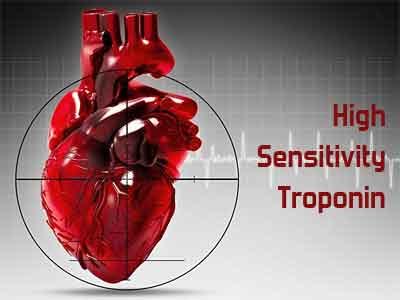- Home
- Editorial
- News
- Practice Guidelines
- Anesthesiology Guidelines
- Cancer Guidelines
- Cardiac Sciences Guidelines
- Critical Care Guidelines
- Dentistry Guidelines
- Dermatology Guidelines
- Diabetes and Endo Guidelines
- Diagnostics Guidelines
- ENT Guidelines
- Featured Practice Guidelines
- Gastroenterology Guidelines
- Geriatrics Guidelines
- Medicine Guidelines
- Nephrology Guidelines
- Neurosciences Guidelines
- Obs and Gynae Guidelines
- Ophthalmology Guidelines
- Orthopaedics Guidelines
- Paediatrics Guidelines
- Psychiatry Guidelines
- Pulmonology Guidelines
- Radiology Guidelines
- Surgery Guidelines
- Urology Guidelines
1-Hour Algorithm for diagnosis AMI by high-sensitivity troponin-BACC Trial

Diagnosis of AMI in suspected patients of ACS is always a difficult issue for a clinician.
This is so , especially when the diagnosis of AMI is necessitated with the diagnosis of Myocardial necrosis, it is necessary to diagnose the evidence as early as possible.
Neumann and colleagues tested a 1-hour diagnostic algorithm to diagnose AMI using a high-sensitivity troponin I assay (hsTnI) with a new and lower cutoff level of 6ng/L.
Biomarkers in Acute Cardiac Care (BACC trial) was a prospective study that tested an hsTnI assay for the 1-hour (versus standard 3-hour) diagnosis of AMI in 1040 patients (65% male, median age, 65 years) presenting to the emergency department with acute chest pain suggestive of AMI. The results were validated in 2 independent cohorts comprising 4,009 patients.
Non-ST segment elevation myocardial infarction (NSTEMI) was diagnosed in 184 patients by measuring troponin T (using a standard assay) on presentation and after 3 hours, combined with clinical data, imaging, ECG and clinical judgment. Patients were assayed for hs-TnI at presentation and after 1 and 3 hours and followed for 6 months.
Using a low hsTnI cutoff value of 6 ng/L, the rule-out algorithm showed a negative predictive value of 99.8% after 1 hour for NSTEMI type 1. Similarly, a rule-in algorithm based on troponin I levels provided a high positive predictive value with 82.8%. Also, the use of the 6 ng/L cutoff resulted in lower follow-up mortality (1.0%) compared with the routinely used 99th percentile (3.7%; p=0.001) for this assay. The findings were validated in 2 independent cohorts where the cutoff showed similarly high negative and positive predictive values. The 1-hour approach was statistically comparable to a 3-hour approach.
The investigators concluded that patients with suspected AMI can be triaged within 1 hour of presentation to the emergency department with no loss of safety compared with a 3-hour approach, when a low and sensitive hsTnI cutoff is applied. This concept enables safe discharge or rapid treatment initiation after 1 hour.
References
- 1 Neumann JT, Sorensen NA, Schwemer T, et al. (Westermann D, senior author).Diagnosis of myocardial infarction using a high-sensitivity troponin I 1-hour algorithm.
- 2ESC 2015 Late-Breaking Clinical Trial: Accurate and rapid diagnosis of myocardial infarction using a high sensitivity Troponin I 1-hour algorithm. Presented on August 30 by D Westermann. Discussant, J Alpert.

Disclaimer: This site is primarily intended for healthcare professionals. Any content/information on this website does not replace the advice of medical and/or health professionals and should not be construed as medical/diagnostic advice/endorsement or prescription. Use of this site is subject to our terms of use, privacy policy, advertisement policy. © 2020 Minerva Medical Treatment Pvt Ltd